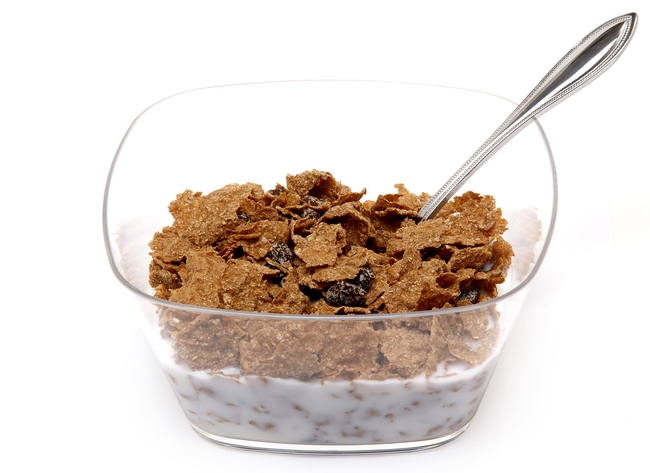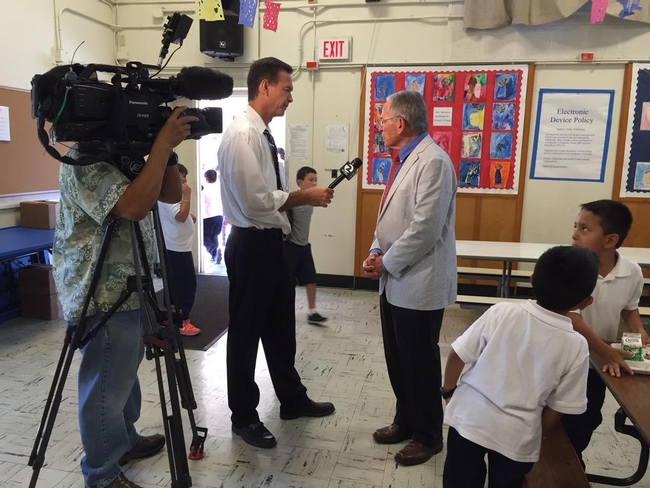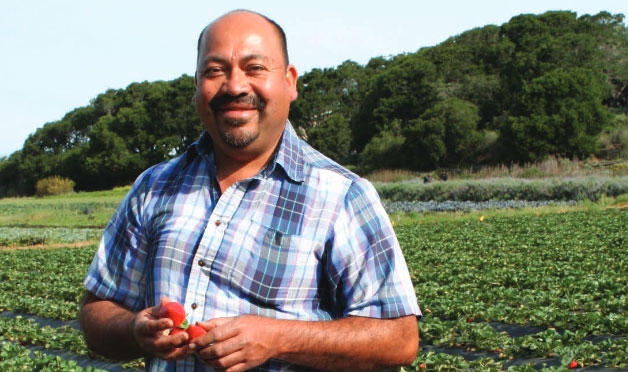Posts Tagged: nutrition
New nutrition fact label is a 'victory for consumers'
"It's a victory for consumers. The impact is going to be incredible," said Pat Crawford, director of research at UC ANR's Nutrition Policy Institute. "It's something in the nutrition field we've waited for years and years: to educate the public on how absolutely critical added sugar is and about the risk of heart disease, diabetes, obesity and dental caries."
The nutrition label changes were unveiled last week by First Lady Michelle Obama. The new label has bigger and bolder calorie information. It shows the amount of "total sugar" and below that, it shows "added sugars." The article gave an example of vanilla yogurt. On the current nutrition facts label, a consumer can see how much sugar it contains, but doesn't know how much of the sugar is from natural lactose in the milk and how much added.
Crawford noticed how hard it is to figure out when a friend asked how much added sugar was in Raisin Bran.
"I poured out a cup of cereal. I counted the raisins," Crawford said. She subtracted the amount of natural sugar in the raisins from total sugar listed on the nutrition facts label to determine the amount of added sugar.
The debate over dairy products is being milked for all its worth
Since the 1960s, nutrition experts have encouraged Americans to forgo whole milk in favor of skim or low-fat dairy products. Now some scientists are saying the move to low-fat dairy is tied to the country's obesity crisis, according to an article in The Guardian
Robert Lustig, professor of pediatric medicine at UC San Francisco, said he believes drinking whole milk can lead to lower calorie intake overall because it is more filling than low-fat and non-fat alternatives.
A UC Agriculture and Natural Resources (UC ANR) expert shared a different viewpoint. Lorrene Ritchie, director of the UC ANR Nutrition Policy Institute, said low-fat or skim milk products are still preferable to whole milk because liquid calories are not as filling as equivalent calories from solid food. Nationwide, the goal for most people should be to reduce calorie intake.
"Until we decrease calorie intake on a population level, we are unlikely to see much reversal in the obesity epidemic," Ritchie said.
Before the end of 2015, the federal government is expected to release its revised Dietary Guidelines for Americans. According to the Guardian article, the guidelines are expected to tout vegetables, fruits, whole grains, legumes, nuts, seafood and "low- or non-fat dairy." The guidelines inform the USDA's dietary infographic, which at the moment takes the form of a plate half filled with vegetables and fruit, and the other half with a small portion of protein food and whole grains.
The Nutrition Policy Institute has been advocating for the addition of water on the MyPlate icon to reinforce its position that plain tap water is the best choice for quenching thirst.
Research and outreach support culture of health and fitness
The small, mostly Mexican-immigrant Central Valley community of Firebaugh has been at the center of an extensive UC Agriculture and Natural Resources (UC ANR) research and outreach project that is aiming to reduce the incidence of childhood obesity, reported Alexandra Wilson on the USDA Blog.
The project, called Niños sanos, familia sana (Healthy children, healthy family) has turned into a community-wide effort and a new culture of health for families. Lucia Kaiser, UC ANR Cooperative Extension specialist, is leading the project. Outreach involves UC ANR Cooperative Extension advisors and staff in Tulare, Yolo, Kern and Fresno counties and the UC CalFresh and EFNEP programs.
According to the Centers for Disease Control and Prevention, childhood obesity has more than doubled in children and quadrupled in adolescents in the past 30 years.
“The lasting impact that Niños Sanos, Familia Sana will have in Firebaugh is precisely the goal of the childhood obesity prevention program – working at the family, school, and community levels to make healthy kids and healthy families a part of everyday life,” said Deirdra Chester, NIFA's national program leader for applied nutrition research.
According to the USDA blog post, Niños sanos, familia sana has contributed to changes in the community:
- Slower weight gain among obese boys
- Reduction in children's consumption of high-fat/high-sugar foods
- Growing interest in programs and policy reflecting local commitment to improved health and nutrition
For more information, see a story and video snapshot in the UC Food Blog.
Congressman eats a healthy lunch with first-graders
Kids are eating better in Contra Costa County schools and it improves their long term health, said Congressman Mark DeSaulnier in an interview broadcast by KTVU News in San Francisco. The congressman was at Ygnacio Valley Elementary School to eat a healthy lunch with students yesterday.
The school received a USDA grant to purchase new kitchen equipment. The UC Division of Agriculture and Natural Resources Nutrition Policy Institute (NPI) has a contract with Pew Charitable Trusts to do case studies of selected schools around California and the nation to show the benefits of the USDA grant program, and to promote its continuation in Congress for future years.
"Many schools are making do with obsolete equipment that cannot readily meet the new, tougher federal meal standards," said Kenneth Hecht, NPI director of policy. "With new equipment, schools can prepare healthier, fresher, more appealing meals that are often the best meal kids get all day."
In the media report, DeSaulnier walked through the new serving line with Ygnacio first-graders and sat down to enjoy a healthy lunch with them. According to KTVU news, the congressman said he has heard a lot of arguments in Washington, DC, against changing food in schools, but he believes it makes a long term difference for children.
New booklet advises Santa Cruz County residents 'Fresh Starts Here'
Produce tasting, nutritional tips and raffles were part of a celebration around the release on Monday of a new guide to local fruit and vegetables in Santa Cruz County, reported Donna Jones in the Santa Cruz Sentinel.
The 40-page booklet - titled "Fresh*Starts*Here" - was developed by UC Cooperative Extension, the Palo Alto Medical Foundation and the Santa Cruz County Farm Bureau. It includes nutrition information, tips for choosing and storing produce, recipes, and profiles of local farmers and health care professionals.
"It's about healthy eating and a healthy community," said Laura Tourte, UCCE farm management advisor in Santa Cruz County.
Tourte said the guide promotes consumption of food grown by local farmers. The recipes were chosen with an eye toward simple preparation and appeal to families.
UCCE contributed $4,100 to support the printing of the booklet, and all development committee members and participants contributed their time and effort. Funds to produce additional copies and a Spanish-language version are being sought.
Additional events marking the release of the booklet take place at 3 p.m. Nov. 18, at the Palo Alto Medical Foundation main clinic, 2025 Soquel Ave., Santa Cruz; and at 3 p.m. Nov. 20 at the PAMF westside clinic, 1303 Mission St., Santa Cruz.






